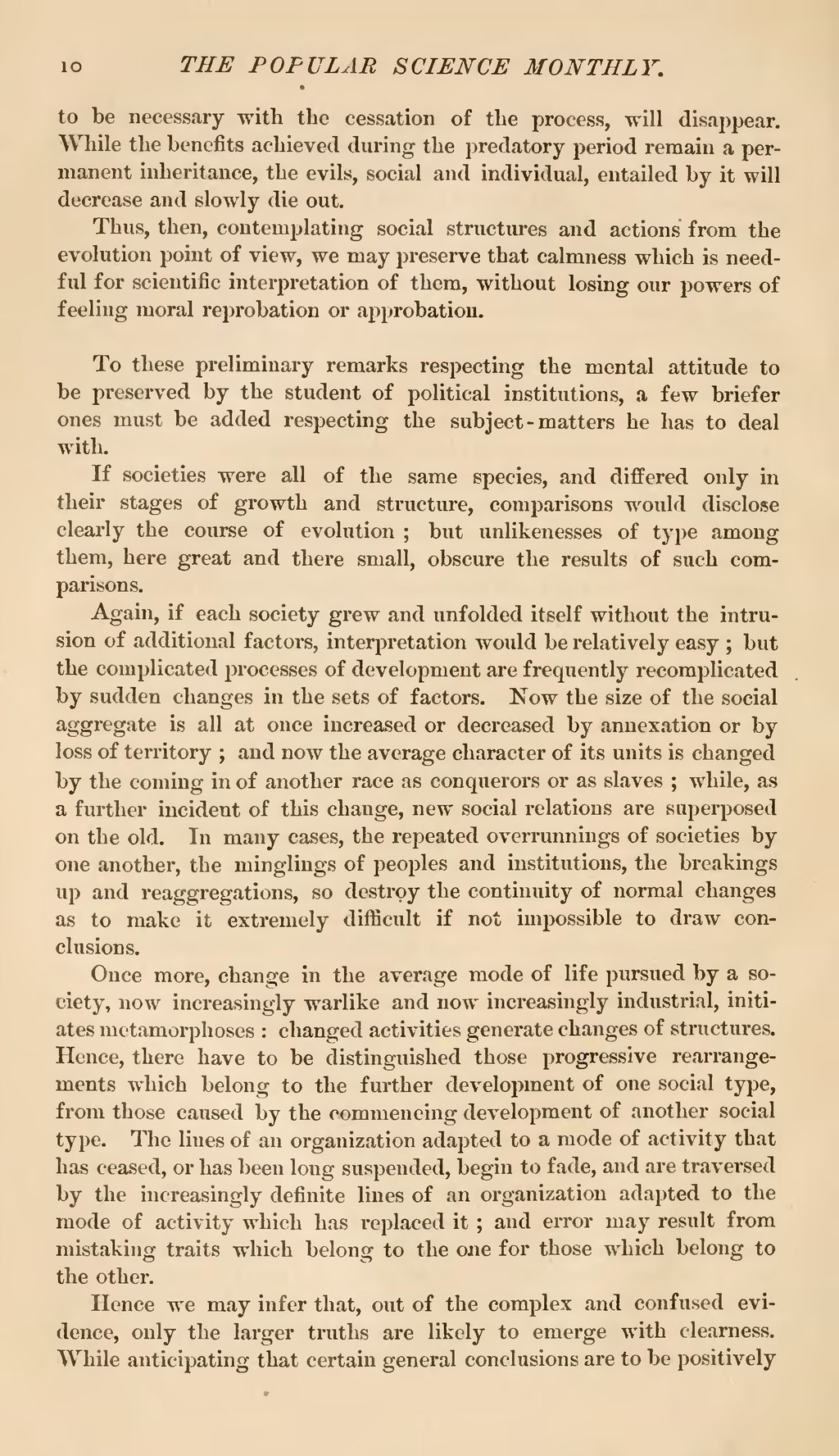to be necessary with the cessation of the process, will disappear. While the benefits achieved during the predatory period remain a permanent inheritance, the evils, social and individual, entailed by it will decrease and slowly die out.
Thus, then, contemplating social structures and actions from the evolution point of view, we may preserve that calmness which is needful for scientific interpretation of them, without losing our powers of feeling moral reprobation or approbation.
To these preliminary remarks respecting the mental attitude to be preserved by the student of political institutions, a few briefer ones must be added respecting the subject-matters he has to deal with.
If societies were all of the same species, and differed only in their stages of growth and structure, comparisons would disclose clearly the course of evolution; but unlikenesses of type among them, here great and there small, obscure the results of such comparisons.
Again, if each society grew and unfolded itself without the intrusion of additional factors, interpretation would be relatively easy; but the complicated processes of development are frequently recomplicated by sudden changes in the sets of factors. Now the size of the social aggregate is all at once increased or decreased by annexation or by loss of territory; and now the average character of its units is changed by the coming in of another race as conquerors or as slaves; while, as a further incident of this change, new social relations are superposed on the old. In many cases, the repeated overrunnings of societies by one another, the minglings of peoples and institutions, the breakings up and reaggregations, so destroy the continuity of normal changes as to make it extremely difficult if not impossible to draw conclusions.
Once more, change in the average mode of life pursued by a society, now increasingly warlike and now increasingly industrial, initiates metamorphoses: changed activities generate changes of structures. Hence, there have to be distinguished those progressive rearrangements which belong to the further development of one social type, from those caused by the commencing development of another social type. The lines of an organization adapted to a mode of activity that has ceased, or has been long suspended, begin to fade, and are traversed by the increasingly definite lines of an organization adapted to the mode of activity which has replaced it; and error may result from mistaking traits which belong to the one for those which belong to the other.
Hence we may infer that, out of the complex and confused evidence, only the larger truths are likely to emerge with clearness. While anticipating that certain general conclusions are to be positively
